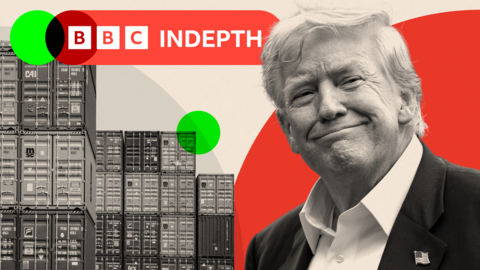Will Trump’s Tariffs Secure America’s Economy or Sink It?
In a surprising move, Donald Trump announced extensive import tariffs in April. He initially faced a backlash that caused global financial panic, but after four months of negotiations, he now claims to be achieving victories with various trade deals and a temporary stabilization of financial markets. These tariffs were designed to reorder America’s position in the global economy, supposedly resulting in increased revenue, a renaissance in domestic manufacturing, and hundreds of billions in foreign investment. However, the long-term consequences remain uncertain, and while short-term results may seem favorable, they raise many questions about Trump’s overarching economic goals.
Tensions were high as international policymakers faced a deadline: comply with new trading terms or risk severe tariffs. Despite expectations, by late July, only a few tariffs had been formalized, with many agreements lacking the detail that characterizes standard international negotiations. For instance, the UK faced 10% tariffs on goods, which was relatively mild compared to 15% tariffs imposed on larger trading partners like the EU and Japan. Agreements often came with conditions requiring nations to purchase more American goods or face higher tariffs.
Despite the potential for increased trade friction, optimism surfaced within certain sectors. The threat of extreme tariffs provided businesses with clarity, allowing them to resume investment and hiring. However, the average tariff on imports has surged to 17%, leading to increased prices for consumers and squeezing household incomes. Thus, the perceived victories may come at a cost, with critics warning of potential damage to both the U.S. and the global economy from reduced demand.
Countries like Germany could experience significant growth impacts due to the automotive sector’s vulnerability under these new tariffs, while India, despite higher rates, may feel less of an immediate shock. Political tension is palpable, especially as rising tariffs contradict Trump’s promise to lower consumer prices. Additionally, various negotiations remain ongoing without resolution, particularly with Canada and Taiwan.
Ultimately, although tariffs have swelled U.S. government revenue significantly, they may force consumers to bear the brunt of these costs, leading to a potential shift in political support as elections approach. Despite temporary stabilization, the long-term effects of Trump’s tariff policies could reshape global trade alliances, possibly disadvantaging the U.S. as nations look to align away from a perceived unreliable ally. Historical patterns suggest that Trump’s efforts to return jobs to America might not yield the envisioned success, challenging his administration’s fundamental objectives.

